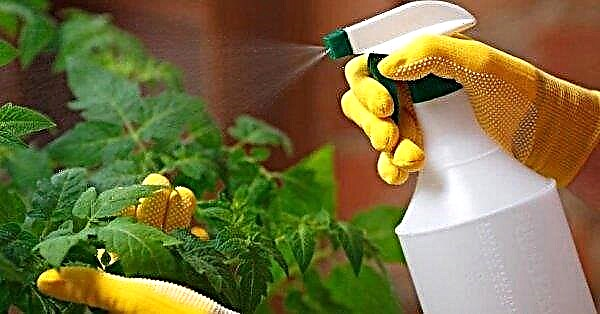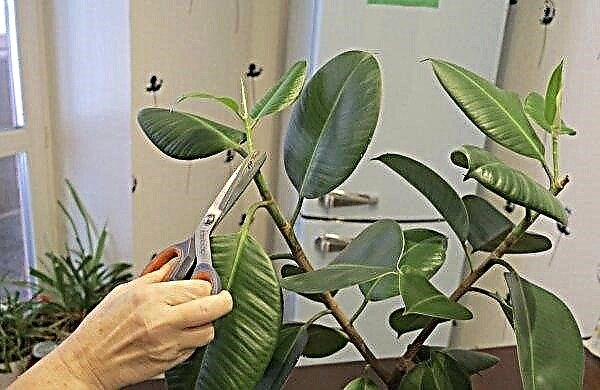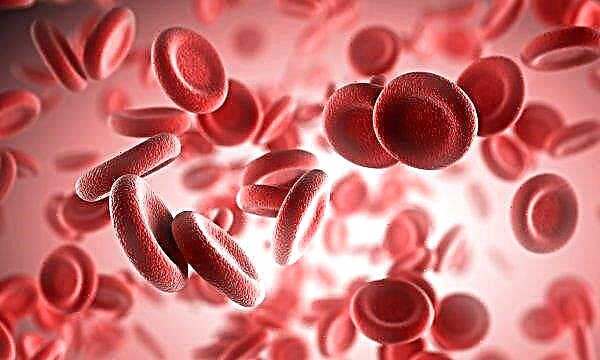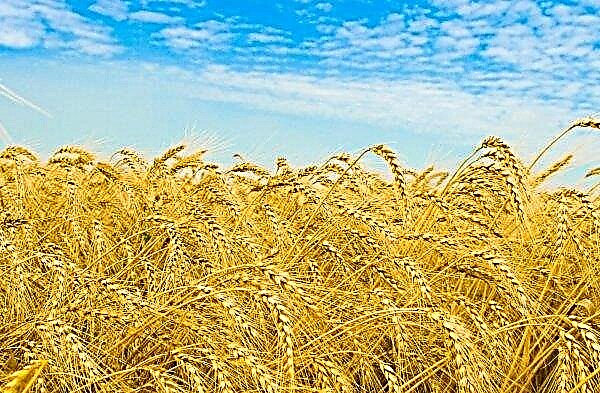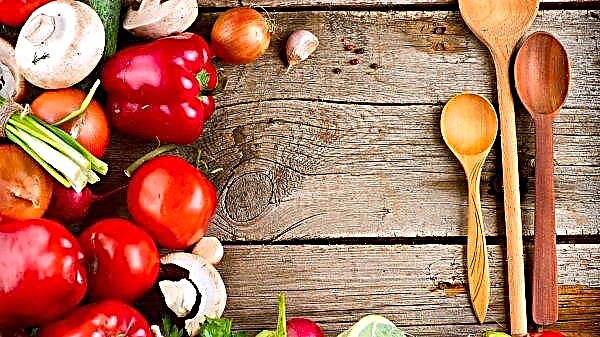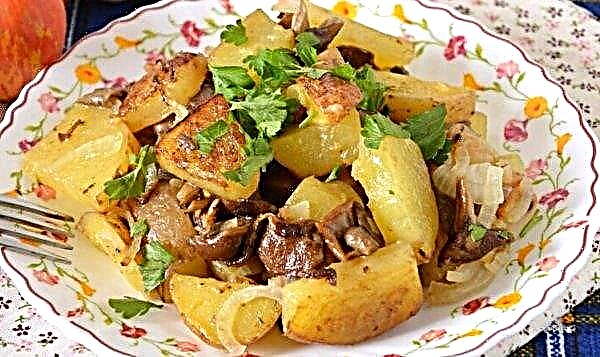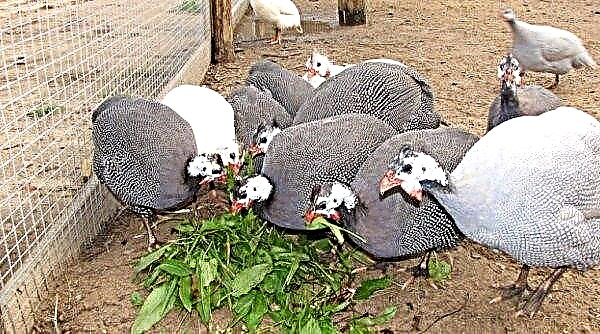Cabbage is a fairly popular vegetable, and the Cyclops variety is considered one of its best varieties. Many gardeners grow this crop in their plots in order to produce large heads of cabbage, which can be widely used fresh and in cooking. This article lists the main characteristics of the Cyclops variety, the rules for planting it and recommendations for caring for the bushes, as well as ways to deal with possible difficulties.
History of Variety Breeding
Cyclops cabbage was bred by Japanese breeders at the beginning of the XXI century. Scientists at Sakata Vegetables Europe S.A.S. worked on this variety. They wanted to get a new species that would be distinguished by dense heads of cabbage, excellent taste and high productivity, and could also be grown in regions with different climate conditions. In Russia, Cyclops F1 cabbage has been grown since 2011 and is a popular variety among gardeners.
Description and characteristic
Variety Cyclops belongs to the highly productive, but it does not need specific care. The heads grow powerful and dense, providing high productivity, and their excellent taste allows you to use the harvested crop not only in fresh form, but also for processing.
Did you know? Cabbage has been cultivated in ancient Egypt since the 15th century. BC e.
Description of the head of cabbage
Heads of cabbage of this variety have an attractive appearance, so many gardeners grow them not only for personal needs, but also for sale. In addition, vegetables retain their shape well during transport and are ideal for fermentation.
The main characteristics of the appearance of the heads of cabbage Cyclops:
- The leaves of the plant have a round shape and slightly wavy edges. They are painted in light green color and are assembled in a three-dimensional outlet, the diameter of which is about 60 cm.
- The surface of the leaves is slightly concave and bubbly, covered with thin veins. There is practically no wax coating on it.
- The cabbage head has a compact size and a round slightly flattened shape. Its weight is from 3 to 5 kg.
- A head is characterized by a dense structure. There are practically no voids between the thin leaves, and on the cut they are painted in a yellowish color.
- The stump is short, so the amount of waste from each head is minimal.
Ripening time
Cabbage Cyclops belongs to mid-ripening varieties, so it takes some time to ripen the crop. The entire vegetation period of the plant takes up to 140 days, starting with the appearance of the first seedlings when planting seeds for seedlings.
About 90 days elapse from planting cabbage sprouts in open ground to harvesting ripe heads of cabbage. This variety is characterized by high productivity, which is 340–600 kg / ha.
Taste qualities
Cyclops cabbage can be used in food in any form - it retains its good taste even after heat treatment.
Dense heads can easily be cut into long and thin strips that have the following characteristics:
- the leaves of the vegetable are sweet, due to the high level of sugar in them (about 8%);
- in the taste of cabbage Cyclops there is a slight sharpness;
- thin leaves are juicy and crispy, and their color does not change during the fermentation process;
- 100 g of cabbage contains about 12 mg of vitamin C and up to 7% carotene.

Pros and cons of the variety
Compared to other varieties, cabbage Cyclops has several beneficial advantages, thanks to which many gardeners are happy to find a place for it in their areas.
- A list of the main advantages of this culture is presented below:
- high productivity;
- excellent heading;
- good transportability;
- unpretentiousness in leaving;
- rich taste and healthy vitamin composition;
- the possibility of growing in various climate conditions;
- universality of the use of vegetables;
- good resistance to fusarium.
- The minor disadvantages of cabbage Cyclops gardeners include such qualities:
- prolonged maturation of the heads;
- insufficient crop keeping;
- dependence of the size of cabbage on the amount of nutrients in the soil.
Did you know? The word "cabbage" comes from the ancient Greek word "caputum" and is translated as "head".
Features of growing varieties
Cyclops need a lot of time to get a cabbage crop, so this variety is grown exclusively in seedlings. When planting seeds directly in open ground, the heads may not have time to ripen before the onset of cold weather. Pre-growing seedlings allows the gardener to transplant young plants to the site earlier with the onset of steady heat. Further, the article discusses the features of planting seeds and the basic rules for growing seedlings, as well as step-by-step instructions for transplanting cabbage sprouts into open ground.
Further, the article discusses the features of planting seeds and the basic rules for growing seedlings, as well as step-by-step instructions for transplanting cabbage sprouts into open ground.
Preparing planting material
In order for Cyclops cabbage seedlings to be sufficiently strong by the time of planting in a permanent place, it is recommended to sow seeds in the first half of April. Planting material purchased in a specialized store, as a rule, goes through all the necessary processing and does not need additional preparation before sowing.
Important! Keep cabbage seeds in a solution of potassium permanganate for the purpose of disinfection should be no more than 30 minutes.
But to improve seed germination, you can independently carry out several additional procedures:
- immerse planting material in a glass of warm water (about + 40 ° C) - defective seeds will float to the surface, and high-quality ones will sink to the bottom;
- dissolve 3 g of potassium permanganate in 250 ml of water (temperature +40 ... + 45 ° С) and immerse planting material in the resulting mixture for disinfection, and then rinse it under running water;
- to reduce the time of germination of seeds, you can soak them before planting in a solution of a growth stimulator - in this case, you must follow the instructions on the product packaging.
 Soaking cabbage seeds in a solution of potassium permanganate.
Soaking cabbage seeds in a solution of potassium permanganate.Growing seedlings
Cyclops cabbage seeds are recommended to be planted in a common container filled with loose and fertile soil. To prepare a suitable soil mixture, the following components are used:
- turf land - 50%;
- humus - 45%;
- sand - 5%.
- On the surface of the soil draw small furrows with a depth of about 1 cm, placing them at a distance of 5 cm from each other.
- Put prepared seeds at the bottom of each furrow with an interval of 3-5 cm. Sprinkle them with a small layer of loose soil, slightly tamping its surface with your hands.
- If necessary, sprinkle the soil in the container with warm water. Cover the container with a film, and then put it in a well-lit place with an air temperature of +23 ... + 26 ° С.
- After 4–5 days, green shoots appear from the planted seeds. At this stage, you need to remove the film from the container and lower the daily temperature in the room with seedlings to + 16 ° C. At night, it is recommended to keep the sprouts at + 10 ° C so that they do not quickly begin to stretch in height.
- As the soil dries, the plants are watered with a small amount of water.
- In 1–1.5 weeks after seed germination, young sprouts dive into separate containers about 6–8 cm high. It is recommended that the seedlings be deepened into the soil to the level of cotyledon leaves.
- Put seedlings on a well-lit window sill and grow at an air temperature of + 18 ° C for 2-3 days. After that, reduce the daily temperature in the room to + 14 ° C, and the night - to + 12 ° C.
- Provide sprouts with moderate warm water and adequate sunlight. In cloudy weather, you can use artificial lighting.
- Seedlings should be kept away from drafts, but regularly carried out in a ventilation room. Periodically loosen the surface of the soil in containers in order to improve its breathability.
- 10 days before planting in a permanent place, begin hardening of the sprouts. To do this, you need to take them out to fresh air for 40-50 minutes, placing the containers in partial shade. With each next day, the time spent by plants on the street is gradually increasing.
 Sowing cabbage seeds for seedlings. Approximately 30 days after the germination of the seeds, the sprouts can be transplanted into the open ground. Moreover, they should have at least 5-6 leaves.
Sowing cabbage seeds for seedlings. Approximately 30 days after the germination of the seeds, the sprouts can be transplanted into the open ground. Moreover, they should have at least 5-6 leaves.Important! If the seedlings of cabbage Cyclops looks weak, you can feed it with a liquid solution of complex fertilizers or infusion of bird droppings (1 part of the substance in 3 parts of water).
Site and ground preparation
In order to collect the maximum yield, Cyclops cabbage needs to be grown on a correctly selected site, as well as preliminary soil preparation.
This culture is recommended to be planted in places that meet the following requirements:
- good sun exposure - its rays will stimulate the growth of heads of cabbage and provide good warming of the soil;
- cold draft protectionov - plants are sensitive to temperature extremes and can get fungal infections;
- fertile and loose soil with neutral acidity - it passes water and air well, and also provides cabbage with nutrients necessary for growth;
- the absence of groundwater close to the surface of the earth - they cause the soil to be oversaturated with moisture, which can cause root rot and disease;
- good predecessors - cabbage is recommended to be grown where carrots, potatoes, cucumbers, onions, garlic, cereals and legumes grew before. Bad predecessors for it are considered tomatoes, radishes, radishes and beets.

To prepare the soil on the site for planting cabbage seedlings, you need to perform the following actions:
- after harvest, remove all plant debris from the soil;
- for acidic and alkaline soils during the autumn digging of the earth, for each 1 m², about 80 g of lime is applied;
- dig the earth again in the spring, adding 1 bucket of humus, 2 cups of wood ash, 1 tsp to 1 m² of area. urea and 2 tbsp. superphosphate;
- immediately before planting seedlings, loosen and level the surface of the earth.
Transplanting seedlings into the ground
Cyclops seedlings are recommended to be transplanted into the open ground in the first half of May. By this time, the street should be at least +18 ... + 20 ° С. Young shoots can survive a short-term cooling, but prolonged freezing will lead to the death of plants.
Important! In order for Cyclops seedlings to better transfer the transplant to the open ground, it is recommended to limit its watering about a week before this procedure.
Plants are transplanted in cloudy weather or in the evening, following this sequence of actions:
- Prepare small holes on the surface of the soil. The distance between rows of holes should be 60 cm, and the interval between adjacent plants in each row should be about 50 cm.
- Pour 1 liter of water into each well and wait until the liquid is completely absorbed into the soil.
- Remove the sprout of cabbage from an individual container together with an earthen lump and place in a hole so that the surface of the earth is at the level of the base of the first lower leaf.
- Sprinkle the roots of the plant with earth and slightly tamp the surface with your hands.
- Pour seedlings with water, spending 0.5 l of liquid for each of them.
- The first few days, it is recommended to shade seedlings of cabbage from direct sunlight.
 The scheme of planting cabbage.
The scheme of planting cabbage.Plant care
The Cyclops variety needs some care. For good growth, seedlings need proper watering, timely top dressing, as well as soil care. In this case, you need to know the norms of water consumption for each plant at different stages of its growth, adhere to the schedule of fertilizer application and monitor the state of the upper soil layer in the beds. The basic principles of crop care are discussed further in the article.
Watering and feeding
Cabbage is a hygrophilous crop, but when watering the beds you need to follow a measure so as not to provoke cracking of heads of cabbage and to prevent the occurrence of fungal diseases. If the vegetables receive too little water, then their growth will slow down and productivity will noticeably decrease.
Did you know? In Russia, cabbage began to be cultivated only in the 9th century.
Basic rules for watering cabbage Cyclops:
- you need to irrigate the beds with plants every 5-7 days, but in dry and hot weather you can water more often if necessary;
- at least 3 liters of liquid is consumed per head;
- beds with vegetables are recommended to be irrigated in the morning and evening, so that all the water is absorbed into the soil, and not evaporated in the sun;
- For irrigation, you can use only warm water with a temperature of +18 ... + 20 ° С - cold water can harm the root system;
- It is recommended to use the drip method of irrigation of beds with cabbage - it helps to more evenly moisten the soil.
 It is equally important to provide the Cyclops cabbage with a sufficient amount of nutrients.
It is equally important to provide the Cyclops cabbage with a sufficient amount of nutrients.To do this, throughout the entire growing season, plants are fed 3 times with fertilizers, following these rules:
- 2 weeks after transplanting seedlings into the open ground, the cabbage is poured with a liquid solution of organic fertilizers - for its preparation, 0.5 l of chicken droppings is dissolved in 10 l of water and 500 ml of the fertilizer obtained are poured under the root of each plant;
- the second feeding is carried out approximately 2 weeks after the first - cabbage is watered with a liquid solution of superphosphate (20 mg of the substance per bucket of water), spending about 1 liter of fertilizer on each plant;
- the last time the nutrients are introduced at the beginning of the fruiting of the culture - a solution of 40 mg of potassium nitrate and 10 liters of water is prepared, and then each bush is watered with 2 liters of the resulting mixture.

Loosening and weeding
When growing cabbage of this variety, it is important to timely remove weeds from the beds and take care of the soil around the bushes. Wild vegetation in the aisles not only serves as a favorable environment for the propagation of fungal infections and pests, but also takes away nutrients and moisture from plants, and also obscures them from sunlight.
The basic rules for weeding and loosening soil on cabbage beds are listed below:
- these procedures are recommended to be carried out after each rain or watering - at the same time the earth becomes softer and easier to process;
- all weeds growing near the cabbage must be pulled out with roots and removed from the site;
- to improve the air permeability of the soil and prevent stagnation of water around the stem of the bush, you need to loosen the soil in the beds and break the dense crust formed on its surface;
- loosening of the soil is carried out no more than 6 cm in depth - this will help to avoid damage to the roots of the bush located below.

Hilling bushes
In order to stimulate the growth and development of the root system, as well as contribute to the increase in the size of heads of cabbage, it is recommended to cultivate the beds with cabbage. This procedure is carried out for the first time already 3 weeks after transplanting the seedlings to a permanent place, and then repeat it again after 1.5–2 weeks. At the same time, a small earthen mound is formed around the stem of each plant.
Did you know? Red cabbage juice is widely used in cooking - it colors sauces and creams in blue.
Pest and Disease Control
When growing Cyclops cabbage, some gardeners may experience difficulties in the defeat of this crop by diseases and pests. Typically, these problems arise as a result of non-compliance with the recommendations for caring for plants or when planting bushes in the wrong place. In any case, you need to know the symptoms of possible diseases and pests of cabbage in order to detect them at an early stage and take the necessary measures.
The main diseases and pests of the Cyclops variety include:
- Bacteriosis (black rot). Signs of infection are small dark spots on the surface of the leaves, which over time increase in size and acquire a brown color. They lead to yellowing and wilting of the leaves, as a result of which the cabbage dies. This disease is not amenable to treatment, so with a severe defeat, you need to immediately remove the bush from the garden.
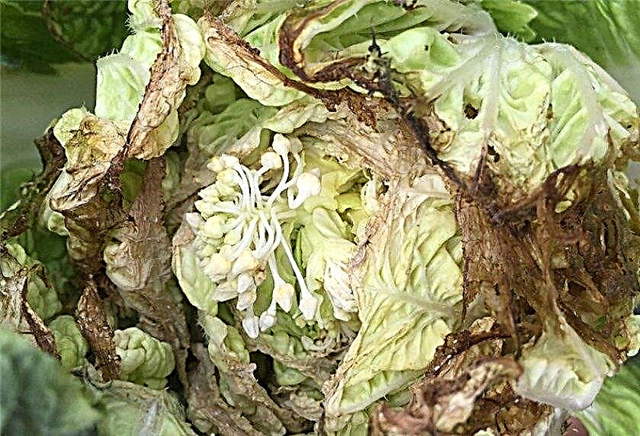
- Kila. This disease has a fungal nature and affects mainly young plants. At the same time, growths of various shapes appear on the roots of the bush, which do not allow the culture to absorb moisture and nutrients from the soil. As a result, the cabbage stops growing, its leaves look weak and lethargic, and with minimal effort, the plants can be completely pulled out of the soil. To eliminate the disease, you need to immediately remove the affected specimens from the beds, and generously sprinkle the soil in this place with lime.

- Cruciferous fleas. The pest is very small and easily jumps from one plant to another. Adult insects gnaw small holes in the leaves of cabbage, and the larvae damage the roots. You can get rid of fleas with a solution of manganese and colloidal salt (2 mg per 10 liters of liquid) - this agent is sprayed with plants every 10 days until the pest is completely destroyed. In severe cases, chemical preparations against insects are used.
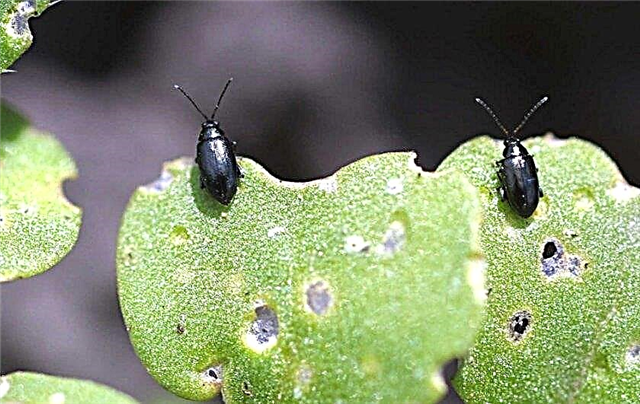
- Beetles and butterflies (aphids, cruciferous bugs, cabbage moth). These pests harm the leaves of the plant, because they feed on their pulp and suck out the juice from the plant. At the same time, on the cabbage, you can notice both adult insects and their larvae. At an early stage of damage, you can get rid of bugs and caterpillars with a dry mixture of tobacco dust and wood ash - it needs to sprinkle the leaves of bushes. If there are too many insects, then insecticides are used.

To prevent the appearance of these problems, it is enough to observe preventive measures:
- remove weeds in a timely manner;
- adhere to the watering schedule;
- disinfect seeds before planting;
- observe crop rotation;
- adhere to the recommended planting scheme for plants on the site.
Features of harvesting and storage of crops
Harvest of cabbage. Cyclops usually ripens by the end of summer. At the same time, heads of cabbage become dense and cease to grow in size, which indicates the need for their cleaning.
The rules for the collection and storage of heads of cabbage of this variety are listed below:
- It is recommended to harvest the crop in dry weather at an air temperature of about + 7 ° C - this will extend the shelf life of vegetables.
- Heads of cabbage are cut with a sharp knife so that a stump 3-4 cm long remains on the soil surface.
- Assembled heads are sorted by size and lay down damaged specimens - they must be used first.
- Dense heads of cabbage with at least two covering green leaves are suitable for storage.
- Harvested vegetables are stored on wooden pallets in the cellar, placing heads in 2-3 rows - in each row the heads of cabbage are laid out in a checkerboard pattern, placing them with stitches up.
- In the room for storage of crops maintain a temperature of 0 ... + 2 ° C and air humidity of at least 90%.
- Subject to all the above conditions, the shelf life of the fruits of the Cyclops variety is about 2 months.
 Ripen cabbage heads Cyclops can tolerate short-term frosts on the soil surface and not crack
Ripen cabbage heads Cyclops can tolerate short-term frosts on the soil surface and not crackFrom them are prepared:
- fresh salads;
- borsch, soups and cabbage soup;
- vegetable stews;
- pickled billets;
- stuffed cabbage.





